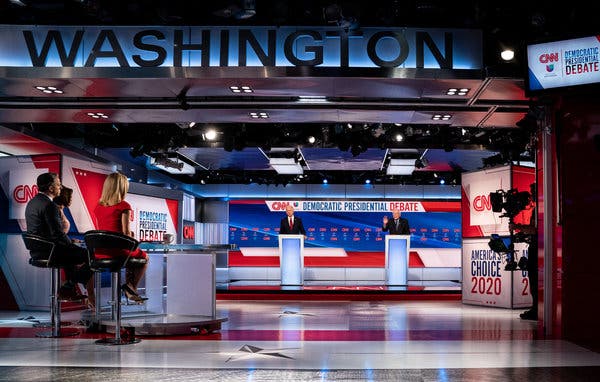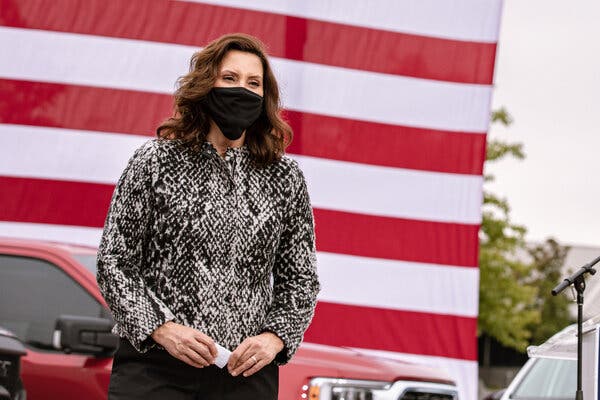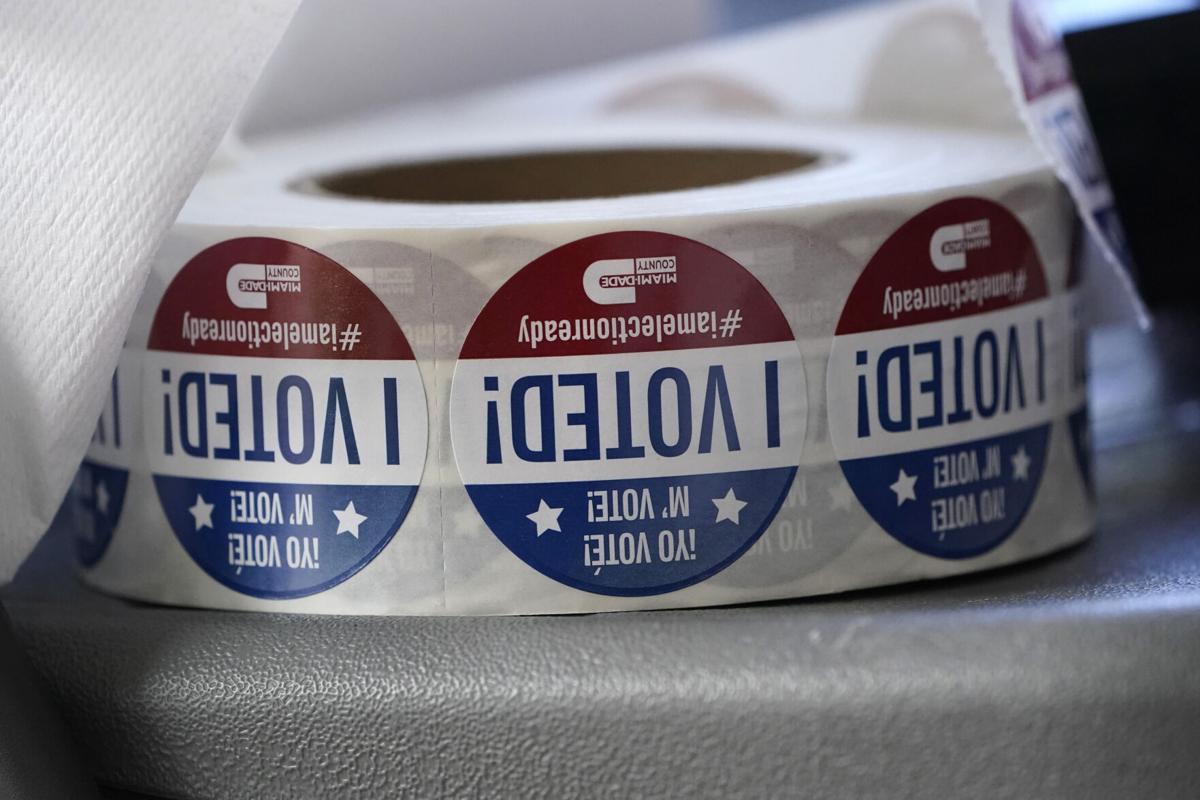Advertisement
Our reporters are following all of the exchanges and fact-checking the two candidates, providing context and explanation.

By The New York Times
The two major candidates continuing to vie for the 2020 Democratic presidential nomination met Sunday night amid the coronavirus crisis at the CNN studio in Washington, without an audience, for what may be the final debate of the primary season.
Here is how the candidates’ remarks stacked up against the truth.
What the Facts Are:
What Mr. Sanders said:
“You were in the Senate for a few years. Time and time again, talking about the necessity with pride about cutting Social Security, cutting Medicare and veterans programs.”
True but lacks context. Mr. Biden at multiple points in his Senate career praised measures to reduce the federal budget deficit, including some that would have reduced the spending growth in Social Security. He has also vowed to protect the program at other times, including in the Senate, in a 2012 vice-presidential debate and in his current campaign, where he has proposed expanding the program.
In 1984, Mr. Biden supported a one-year freeze to cost-of-living adjustments in federal spending that would have applied to Social Security. In 1995 he voted for a federal balanced budget amendment that did not explicitly shield the program from cuts. He said in 2007 that he was open to raising the eligibility age for receiving benefits from the program, and he and President Barack Obama tried to negotiate a so-called grand bargain on federal spending that would have reduced the growth of Social Security spending over time.
What the facts are:
What Mr. biden Said:
“No, the World Health Organization offered testing kits that they have available to give to us now. We refused them. We did not want to buy them. We did not want to get them from them. We wanted to make sure we had our own.”
True. The Centers for Disease Control and Prevention did decide to develop its own coronavirus test, despite the existence of one already created by the World Health Organization. As The New York Times reported, the federal government “designed its own test as it typically does during an outbreak.” That test, however, produced faulty results and ultimately delayed local public health departments’ ability to test a large number of patients for the novel disease. Meanwhile, the World Health Organization made its test widely available, and more than 60 countries decided to use that product.
WHAT THE facts are:
WHAT WAS SAID:
Mr. Biden: “We just passed a law saying you do not have to pay for any of this, period.”
Mr. Sanders: “That’s not true. As a matter of fact, that’s not true. That law has enormous loopholes.”
Mr. Biden’s statement was exaggerated. The emergency relief package passed by the House in a bipartisan vote on Saturday includes several measures intended to help families and workers including paid sick leave, unemployment benefits and food assistance. President Trump has voiced his support, but it is slightly premature to call this legislation “law.”
The bill requires private insurers and government-run programs like Medicare and Medicaid to cover diagnostic testing for the coronavirus “at no cost to the consumer.” It also gives states the option to extend Medicaid coverage and free testing to their uninsured populations.
What the Facts Are:
What Mr. Biden said:
“A Medicare option. We can do that now. I can get that passed. I can get that done, if I’m president of the United States of America.”
This is exaggerated. Mr. Biden tried to argue that his health care plan, which would let Americans sign up for Medicare while leaving private coverage intact, had a more realistic path toward becoming legislation than Mr. Sanders’s Medicare-for-all proposal. In truth, both policies would face long odds in Congress, where Republicans currently hold a majority in the Senate and oppose both ideas. Even if Democrats were to control both houses, the public option would still be far from easy to enact into law: Many wanted to include it in the Affordable Care Act passed under President Barack Obama, but it ultimately fell out of the legislation after intense lobbying from the health insurance industry.
What the Facts Are:
What Mr. Biden said:
“You get rid of the nine super PACs?”
This is exaggerated. Mr. Biden was most likely referring to “People Power for Bernie,” a coalition of nine outside advocacy groups backing Mr. Sanders’s candidacy and organizing voter mobilization efforts on his behalf. These groups were labeled “dark money” by Pete Buttigieg, the former Democratic candidate. Most of them others are 501(c)(4) organizations or social welfare nonprofits.
Beyond these groups, Mr. Sanders does have the support of a super PAC of National Nurses United, the country’s largest nurses’ union. It has spent over $750,000 in support of his candidacy, according to the campaign finance watchdog the Center for Responsive Politics. (The center also lists three other super PACs that support Mr. Sanders, but they have spent no money on his behalf.) In contrast, the super PAC supporting Mr. Biden (Unite the Country) was created by his former aides and has spent about $10 million on his behalf.
What the Facts Are:
What Mr. Biden said:
“We both agree that we have a new green deal to deal with the threat that faces humanity.”
This is mostly true. The Green New Deal is a congressional resolution that lays out an ambitious plan to fight both climate change and economic inequality. It includes a goal of switching to 100 percent wind, solar and other renewable energy by 2030 while providing a federal jobs guarantee and Medicare for all. Mr. Sanders is an original co-sponsor of the Senate version of that resolution, and incorporated many of the elements of the bill into his climate plan, which he also has named for the Green New Deal.
Mr. Biden has said in his climate plan that he believes the Green New Deal “is a crucial framework for meeting the climate challenges we face.” But his plan puts $1.7 trillion into addressing climate change compared with $16 trillion proposed by Mr. Sanders, and sets a slightly later deadline — 2050 — for decarbonizing the economy.
What the facts are:
What Mr. Sanders said:
“That bill was opposed by LULAC, the largest Latino organization in America. They called the guest worker program akin to slavery. The bill was killed because it was a vote on the amendment. I think it was 49 to 48. You know who voted with me? Barack Obama.”
This is misleading. Mr. Sanders was referring to immigration reform legislation in 2007. The bill, which ultimately failed in the Senate, would have given legal status to millions of undocumented immigrants, established a temporary worker program, strengthened border security and limited family-based immigration in favor of a skills- and education-based system.
Mr. Sanders was right that the League of United Latin American Citizens said the bill would exploit immigrant workers. And he and Mr. Obama, then the junior senator from Illinois, both voted for an amendment that would have scaled back the guest worker program in early June 2007.
But later, Mr. Obama voted to invoke cloture — ending debate and allowing the Senate to take a final vote on the whole bill — three times, while Mr. Sanders voted against it all three times. Weeks later, the Senate revived the legislation. Mr. Obama again voted to move the bill forward while Mr. Sanders did not.
What the facts are:
What Mr. Sanders said:
“It was undermining the Iranian agreement.”
True on both counts. The argument centers on a vote that the Senate took in June 2017 to impose sanctions on Russia for its interference in the 2016 election. The bill also included sanctions on Iran, at a time when the 2015 nuclear accord with Tehran was still fully in effect. (Mr. Trump exited the agreement nearly a year later.)
The bill passed 98 to 2; only Mr. Sanders and Senator Rand Paul, Republican of Kentucky, voted against it. In a statement after the vote, Mr. Sanders said that “I am strongly supportive of the sanctions on Russia included in this bill,” and that it was “unacceptable” that Russia interfered with the U.S. elections “or anywhere around the world.” But he said he was concerned that new sanctions on Iran “could endanger the very important nuclear agreement that was signed between the United States, its partners and Iran in 2015.”
Mr. Biden was a modest player in the Obama administration negotiation of that deal — most of the heavy lifting was done by Secretary of State John Kerry and a team of State and Energy Department negotiators. But he supported it. In criticizing Mr. Sanders, he is essentially saying that the need to punish Russia should have overridden the concerns about undermining the Iran deal. Mr. Sanders came to the opposite conclusion.
What the Facts Are:
What Mr. Biden said:
“Also part of that was bailing out the automobile industry. Saving thousands of jobs. Tens of thousands of jobs over time. He voted against that as well.”
This is misleading. Mr. Sanders actually supported the $14 billion auto rescue plan in December 2008. “The problem is if you don’t act in the midst of a growing recession, what does it mean to create a situation where millions of more people become unemployed and that could spread? And I have serious concerns about that. I think it would be a terrible idea to add millions more to the unemployment rolls,” Mr. Sanders told Vermont Public Radio at the time.
But the bill failed in the Senate, prompting the Bush administration to propose using funding from the Troubled Asset Relief Program — which passed in October 2008 to bail out Wall Street and which Mr. Sanders opposed — to also aid automakers. Once the bailouts were lumped together, Mr. Sanders opposed the overall package.
Fact checks by Sarah Kliff, Linda Qiu, Jim Tankersley, David E. Sanger and Lisa Friedman.

